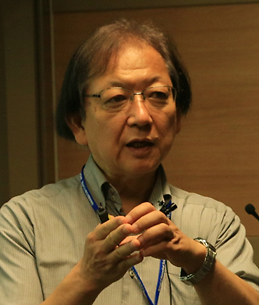Seminar "Reassessment of mechanism underlying cerebellar learning" by Dr. Kazuhiko Yamaguchi

Date
Location
Description
Title: "Reassessment of mechanism underlying cerebellar learning"
Abstract:
Acquisition of an internal model for motor control through learning is supposed to require long-term depression (LTD) of synaptic transmission between parallel fiber (PF) and Purkinje cell (PC) in the cerebellum. However, discrepancy between LTD and motor learning was reported in mutant mice that targeted the expression of PF-PC LTD by blocking internalization of AMPA receptors (Schonewille et al., 2011). They reported that motor learning was normal, while PF-PC LTD was not induced in these mutant mice, and concluded that PF-PC LTD was not essential for cerebellar motor learning. We reexamined LTD-induction ability in these mutant mice. By using several types of stimulation protocols, we could induce LTD in these mutant mice. Thus, we demonstrated that no discrepancy existed between motor learning and cerebellar LTD, and concluded that the conventional molecular model of LTD should be reconsidered.
Next topic is on the kinetics of AMPAR trafficking at PF-PC synapse. Though regulation of AMPAR trafficking was important for controlling synaptic strength, precise exo/endocytic rates of AMPARs were not measured in PC. Here we measured elimination rate of AMPARs from the synaptic membrane by uncaging of a caged inhibitory peptide against exocytic insertion of GluA2-containing AMPARs into the synaptic membrane. Elimination time-constant was around 1.3 min. Because free lateral diffusion of AMPARs from the synaptic membrane to the extrasynaptic region was found to be strongly restricted, measured elimination time-constant was considered to reflect mainly that of endocytic elimination of AMPARs. During LTD expression, this time-constant was not altered, but exocytic insertion of AMPAR into the synaptic membrane was markedly suppressed. A model involving suppression of exocytosis can explain measured LTD quantitatively. Elucidation of the molecular mechanisms underlying long-term suppression of exocytosis of AMPARs during LTD-expression may provide useful tools to visualize “engram” of cerebellar learning.
Attachments
Subscribe to the OIST Calendar: Right-click to download, then open in your calendar application.



